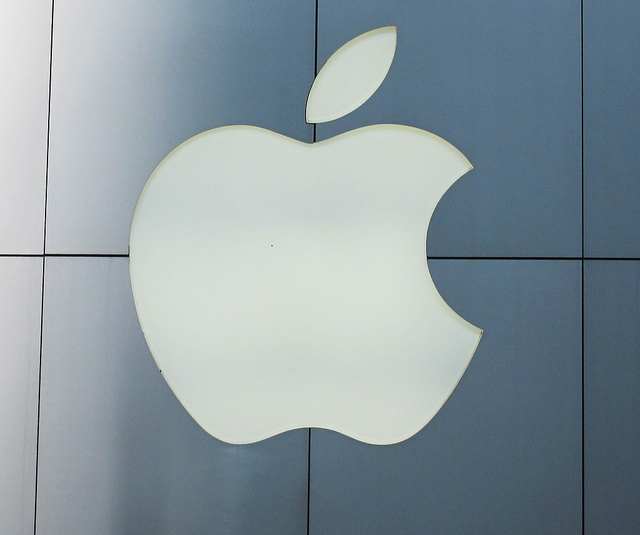Will We Pay More for “Made in America” iPhones?
Donald Trump’s victory put technology stocks in the crosshairs and in the red. Instead of a steady-as-she-goes Hillary Clinton presidency, Americans elected a businessman with a greater sense of urgency. One of Trump’s biggest presidential promises was to restore American jobs. This was seen as bad news for U.S. tech companies that make most of their products in Asia.
But it appears as though Apple Inc. (NASDAQ:AAPL) might be bending to Trump’s pro-growth strategies and moving smartphone production to the United States.
In the lead-up to the U.S. elections, technology stocks were one of the biggest winners on Wall Street. In fact, tech stocks were at their highest levels in 16 years. The Technology SPDR (ETF) (NYSEARCA:XLK) was up approximately 15% year-to-date immediately before the election.
Technology stocks weren’t bullish because they were being propped up by artificially low interest rates. They were actually reporting solid earnings growth. In the third quarter, the information technology (IT) sector had the highest percentage of companies (89%) reporting earnings above estimates. The ITy sector also had the highest percentage of companies reporting revenues above estimates, at 76%. (Source: “Key Metrics,” FactSet Research Systems Inc., November 18, 2016.)
The outlook for tech stocks in the fourth quarter looks decent too. More IT sector companies have issued positive earnings guidance (57%) than negative guidance. With 100 companies on the S&P 500 reporting guidance, 68% have issued negative earnings guidance.
Despite the solid growth in 2016, technology stocks have shed billions in market value since the U.S. election on concerns about the tech industry’s future under a Trump presidency. This is in sharp contrast to the overall equity benchmarks which have all surged to record levels.
Trump’s election is a mixed-bag for technology investors as Trump has vowed to get tough on big tech companies that manufacture products outside of the United States. In promoting his protectionist measures, Trump said during the campaign, “We’re going to get Apple to build their damn computers and things in this country instead of in other countries.”
At the time, everyone thought his words were tough, but hollow. After all, what can Trump actually do to force Apple CEO Tim Cook to make Apple products in the U.S? I’m pretty sure that Democrat-friendly Silicon Valley didn’t feel too threatened by Trump, what with all the polls suggesting that Hillary Clinton would win by a landslide.
Fast-forward two weeks and it looks like Apple is rethinking things.
Will Apple Move iPhone Production to U.S?
“Made in America” doesn’t come cheap, especially when compared to the wages in Asia. But, in light of Trump’s victory, it appears as though Apple is reconsidering its options. In a surprise turn of events, Apple reportedly asked both Foxconn Technology Co Ltd (TPE:2354) and Pegatron Corporation (TPE:4938), the two tech firms responsible for assembling more than 200 million Apple “iPhones” annually, to look into making iPhones in the U.S. (Source: “Apple could make iPhones in US in future: sources,” Nikkei Asian Review, November 18, 2016.)
Pegatron declined to file a report but Foxconn said it would have something to show Apple as early as June. However, Foxconn Chairman Terry Gou warned, not surprisingly, that it would cost a lot more to produce the iPhone in the United States. How much more? Today, you can buy a 32 GB “iPhone 7” for $650.00. To buy the Made-in-America version, it could cost anywhere from $740.00 to $1,300.00.
The big increase comes from shipping components and natural resources, recruiting 8,700 industrial engineers to oversee assembly lines, and actually building the assembly lines.
Moving manufacturing facilities isn’t without precedent. Trump doesn’t want to leave tech companies high and dry. He wants to encourage America’s competitive advantages. His proposed tax cuts, fewer regulations, and negotiated trade deals could benefit tech companies.
Steep tariffs could also encourage tech companies like Apple to move their assembly plans to American soil. Trump has proposed levying tariffs as high as 45% on competing Chinese imports.

Credits: Flickr.com/Sublight Monster
This past week, Trump said he spoke with Tim Cook on the phone and urged him to move some of Apple’s production line to the U.S. Trump described that conversation:
I got a call from Tim Cook at Apple, and I said, ‘Tim, you know one of the things that will be a real achievement for me is when I get Apple to build a big plant in the United States, or many big plants in the United States, where instead of going to China, and going to Vietnam, and going to the places that you go to, you’re making your product right here.’ He said, ‘I understand that.’ I said: ‘I think we’ll create the incentives for you, and I think you’re going to do it. We’re going for a very large tax cut for corporations, which you’ll be happy about.’
(Source: “Donald Trump’s New York Times Interview: Full Transcript,” The New York Times, November 23, 2016.)
Citing costs, many think Apple moving part of its production to the U.S. is a far-fetched idea. That said, Ford Motor Company (NYSE:F) said recently that it has shelved plans to move production of its “Lincoln SUV” from Kentucky to Mexico.
Will politics trump economics? With a 45% tax on products imported from China, Apple may not have to choose. Then it’s just up to Americans to decide if they’re willing to put their money where their vote is.






